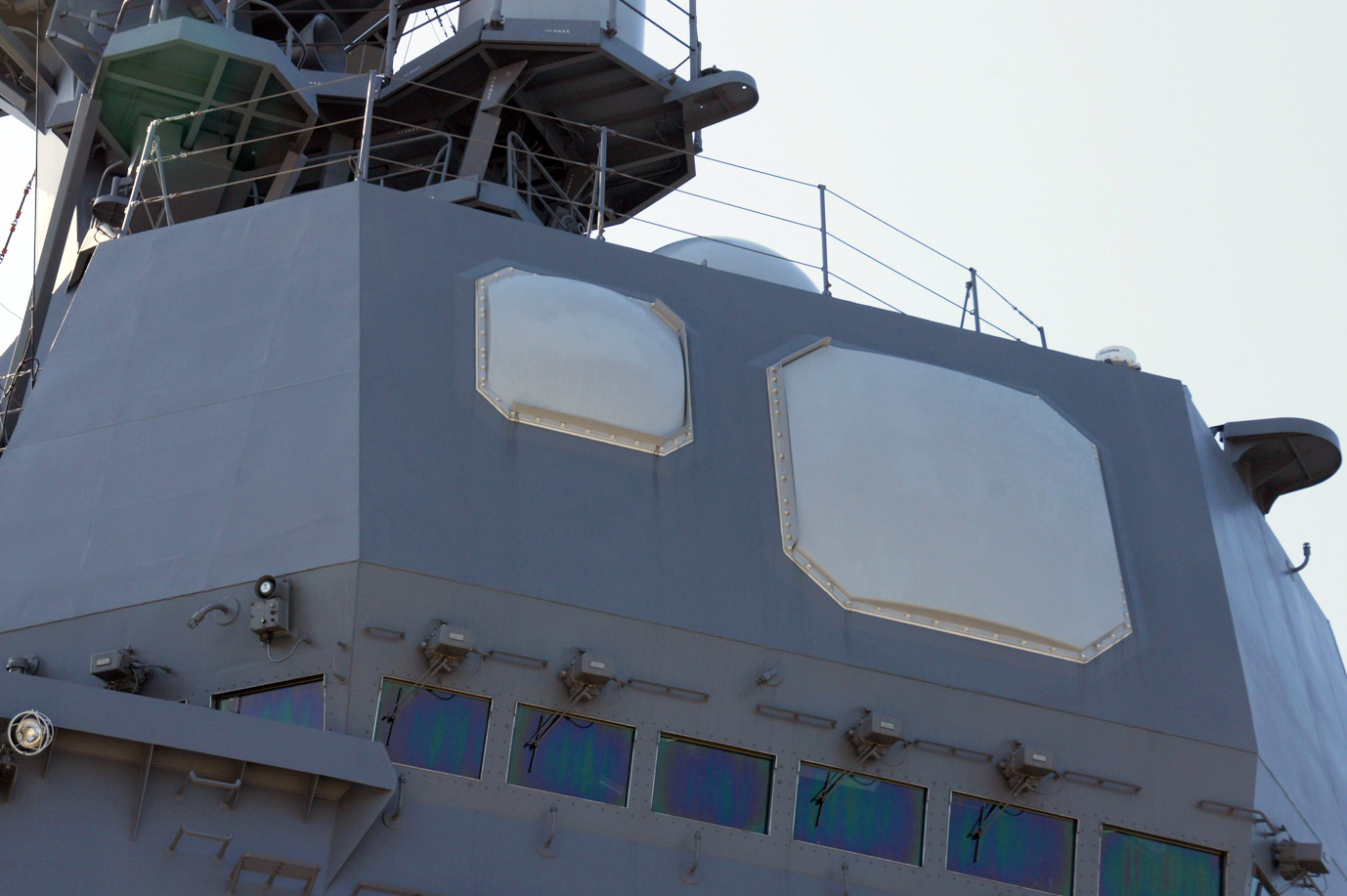OPS-50 on:
[Wikipedia]
[Google]
[Amazon]
 FCS-3 is an integrated naval weapons system developed by the
FCS-3 is an integrated naval weapons system developed by the
Japanese Defense Ministry
The is an executive department of the Government of Japan responsible for preserving the peace and independence of Japan, and maintaining the country’s national security and the Japan Self-Defense Forces.
The ministry is headed by the ...
for the Japan Maritime Self-Defense Force
, abbreviated , also simply known as the Japanese Navy, is the maritime warfare branch of the Japan Self-Defense Forces, tasked with the naval defense of Japan. The JMSDF was formed following the dissolution of the Imperial Japanese Navy (IJN) ...
.
This system is composed of weapon-direction and fire-control subsystem and multi-function radar subsystem. The multi-function radar subsystem adopted active electronically scanned array
An active electronically scanned array (AESA) is a type of phased array antenna, which is a computer-controlled array antenna in which the beam of radio waves can be electronically steered to point in different directions without moving the an ...
(AESA) technology, and there are two sets of antennas: the larger one is a C-band radar for surveillance and tracking, the smaller one is an X-band
The X band is the designation for a band of frequencies in the microwave radio region of the electromagnetic spectrum. In some cases, such as in communication engineering, the frequency range of the X band is rather indefinitely set at approxim ...
radar as a fire-control radar
A fire-control radar (FCR) is a radar that is designed specifically to provide information (mainly target azimuth, elevation, range and range rate) to a fire-control system in order to direct weapons such that they hit a target. They are sometim ...
.
After a prolonged sea trial on board JS ''Asuka'', this system was introduced in 2007 on the . The enhanced version, FCS-3A, was employed on the ''Akizuki''-class destroyers., and limited-function version, OPS-50, was also delivered for the s. The fire-control function are omitted in the OPS-50 system, so they have only one set of antennas operating C-band.
The Asahi-class destroyer
The ''Asahi'' class of destroyers of the Japan Maritime Self-Defense Force is optimized for undersea warfare. The class was initially designated "25DD", referring to a date on the Japanese calendar, specifically the 25th fiscal year of the Heisei ...
features an FCS-3A radar that uses Gallium nitride
Gallium nitride () is a binary III/ V direct bandgap semiconductor commonly used in blue light-emitting diodes since the 1990s. The compound is a very hard material that has a Wurtzite crystal structure. Its wide band gap of 3.4 eV affords it ...
technology to improve its performance.
References
{{reflist Military radars of Japan Naval radars Japan Maritime Self-Defense Force Military equipment introduced in the 2000s